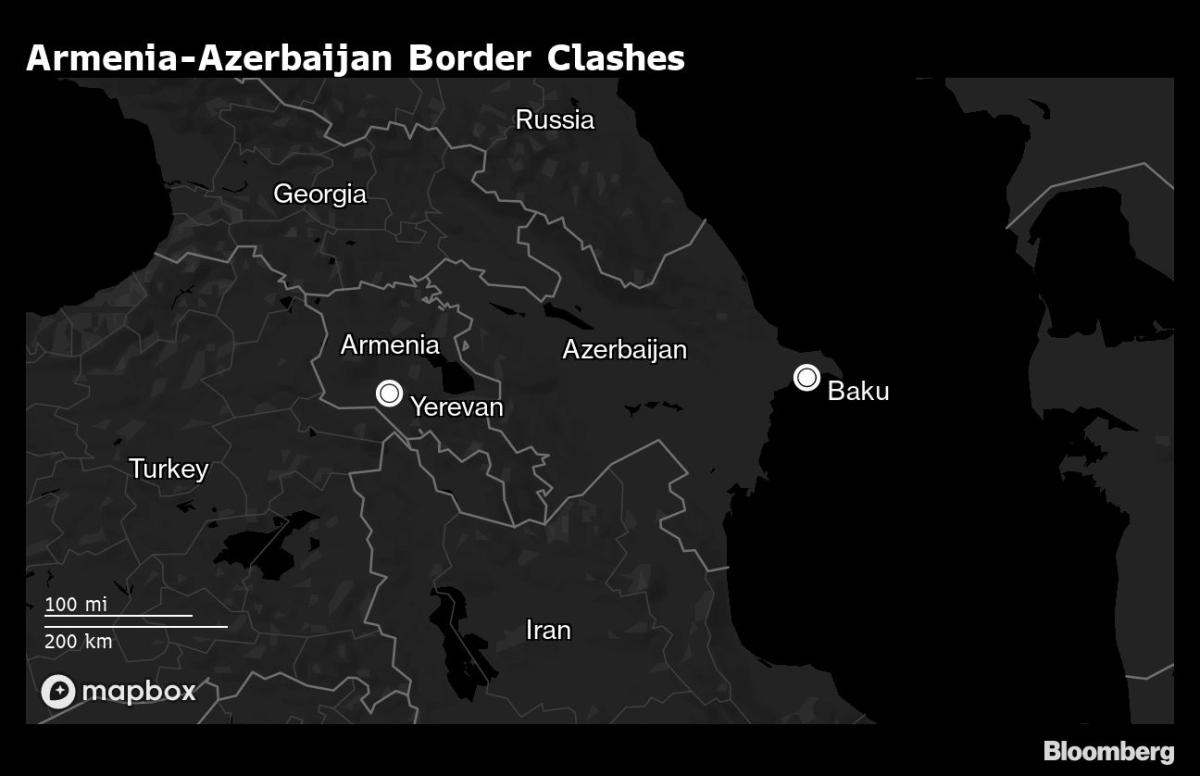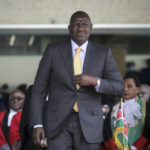
(Bloomberg) — Azerbajian and Armenia resumed fighting at their border despite appeals from the US and France for them to respect a Russia-brokered cease-fire amid the worst death toll since a 2020 war.
Most Read from Bloomberg
Azerbaijani forces fired artillery and other large-caliber weapons toward southern Armenian towns including Jermuk starting from the early morning, Armenia’s Defense Ministry said Wednesday. Armenia targeted troop positions in the Kalbacar and Lachin districts of Azerbaijan, the Defense Ministry in Baku said.
At least 99 soldiers on both sides were reported killed on Tuesday in fighting that the Caucasus states blamed each other for starting. The clashes are the worst since thousands of troops died in a 44-day war over the disputed territory of Nagorno-Karabakh that was halted in November 2020 when Russian President Vladimir Putin negotiated a truce.
The conflict has erupted with Russia distracted by Putin’s invasion of Ukraine, where his troops have been forced to retreat under pressure from a Ukrainian counteroffensive. While Azerbaijan and Armenia have held talks to try to delineate their common border and open up transport routes as part of the truce, they have yet to reach a final peace agreement.
French President Emmanuel Macron told Azerbaijani leader Ilham Aliyev there’s an urgent need to end the hostilities and respect the cease-fire in a phone call late Tuesday, according to an Elysee statement. France intends to raise the crisis at the United Nations Security Council, where it’s the current president, the statement said.
Aliyev replied that Azerbaijan is responding to Armenian provocations, according to his presidential website. He also held phone talks Tuesday with Turkish President Recep Tayyip Erdogan, which has a defense pact with Azerbaijan and whose military helped Aliyev’s army to win the 2020 war.
The US State Department called for an immediate cease-fire while pointing the finger at Azerbaijan for attacks on Armenian territory. “We have seen significant evidence of Azerbaijani shelling inside Armenia and significant damage to Armenian infrastructure,” spokesman Ned Price told reporters at a briefing, adding that the US was urging Russia to use its influence with both states to halt the fighting.
Russia’s Foreign Ministry announced early Tuesday that it had negotiated a cease-fire between Azerbaijan and Armenia. But the deadline to halt hostilities was apparently ignored.
The European Union has also called for a cease-fire and urged the two sides to return to negotiations. The EU in July signed a deal to double imports of natural gas from Azerbaijan as it seeks to break Putin’s grip on the bloc’s energy supplies in the confrontation over Ukraine.
“With Moscow tied up in another conflict, the EU is perhaps best placed to mediate a ceasefire,” said Ophelia Coutts, Russia and former Soviet Union analyst at risk intelligence company Verisk Maplecroft. “Although Brussels’ recent deal to import more gas from Azerbaijan potentially undermines its bid to position itself as an honest peace broker.”
Defense Pact
Armenian Prime Minister Nikol Pashinyan has appealed to Moscow for support under a 1997 defense pact, and also asked the Russian-led Collective Security Treaty Organization to provide assistance at an emergency meeting with Putin and other leaders by videoconference Tuesday. The mutual-defense body said its secretary-general would head a mission to Armenia to assess the border situation.
So far, though, neither Russia nor the CSTO have indicated they’re willing to send forces to bolster Armenia’s territorial integrity. When Kazakh President Kassym-Jomart Tokayev asked for CSTO assistance to put down violent protests in January, Putin immediately ordered troops to lead a peacekeeping operation.
The CSTO mission to Armenia will submit a report for heads of state of member countries to consider, Kremlin spokesman Dmitry Peskov told reporters on a conference call Wednesday. The situation at the Armenia-Azerbaijan border remains tense, he said.
Azerbaijani soldiers seized 100 square kilometers (39 square miles) of territory from Armenians along the non-delineated border on Tuesday, the pro-government Caliber news service in Baku reported.
Aliyev has demanded the establishment of a corridor through southern Armenia to an Azerbaijani exclave bordering Turkey. That’s been rejected by Pashinyan, who’s said the truce brokered by Putin only provides for the opening of transport links between the two states, which he’s prepared to implement.
Azerbaijan took control of part of Nagorno-Karabakh, which is mostly populated by Armenians but internationally recognized as part of its territory, in the 2020 conflict and regained seven surrounding districts that Armenian troops had occupied since the early 1990s.
(An earlier version of this story corrected the spelling of Iraq to Iran in the graphic)
(Updates with analyst comment in 10th paragragh, Kremlin in 13th paragraph)
Most Read from Bloomberg Businessweek
©2022 Bloomberg L.P.




